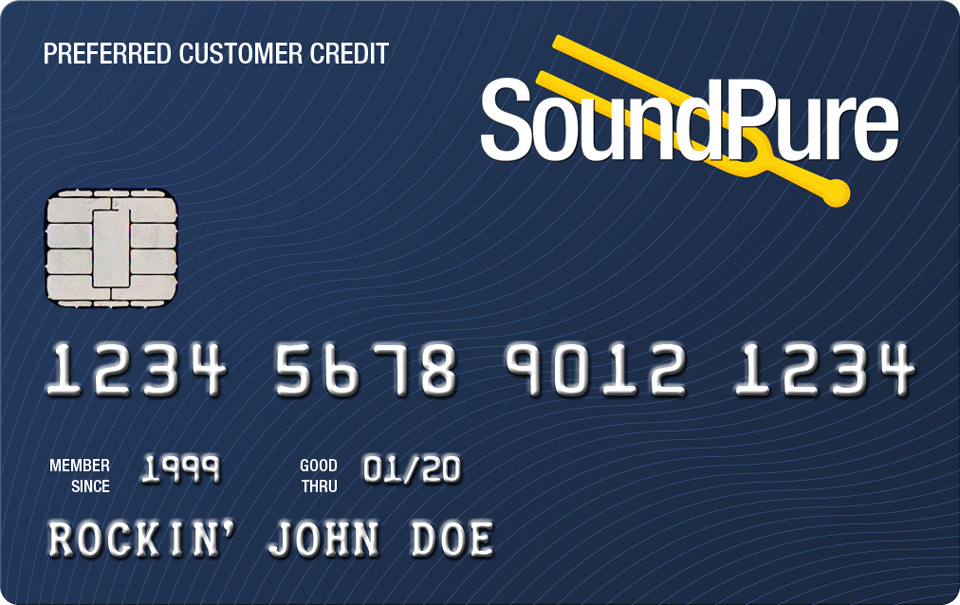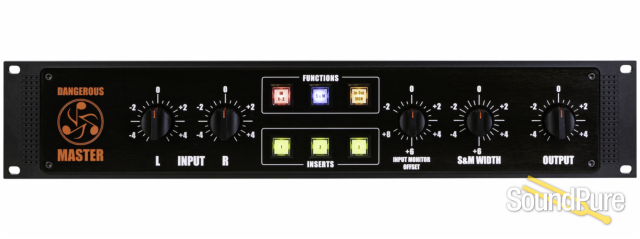-
Call Us Toll Free888-528-9703
-
Local/International (+1)919-682-5552
- Call Us! Toll Free! 888-528-9703
- Local / International (+1) 919-682-5552

Dangerous Music CUTTER Vinyl Mastering Console From Dangerous
TRANSPARENCY AND FLEXIBILITY FOR MASTERING TO VINYL
$8,999.00
"Experience the Difference"
 Payments as low as $204/mo.
Payments as low as $204/mo.
Manufacturer's Description from Dangerous
As vinyl makes its resurgence, cutting is becoming a required service in many mastering rooms. Thus we are offering the new Dangerous Music CUTTER, a version of our proven MASTER transfer console with its incredible all-analog Mid-Side matrix and transparent routing, now with outputs especially designed to feed a lathe.
A lathe requires two identical but separate stereo signals from the final output stage, one to feed the preview computer that determines the size and shape of the groove to be cut, and one to feed the cutting head. The CUTTER accomplishes this seamlessly and is one of the only modern devices to do so. We look forward to providing tools for the new generation of cutting engineers.
THE DEEP LEGACY OF DANGEROUS MASTERING EQUIPMENT
Before co-founding Dangerous Music, our lead electrical designer, Chris Muth, became an industry legend for his custom mastering consoles built for the most elite studios. Decades later, these consoles are still coveted for their incredible headroom, their robust, musical sound, and the crystal clear sonics demanded by top-tier pros. Costing tens-of-thousands of dollars, those legendary consoles have been used to master thousands of hit records. Dangerous Music offered Muth’s designs to the public at affordable prices for the first time, and the MASTER quickly became a staple in mastering rooms everywhere. Through meticulous research, development and design we were able to offer the MASTER in just two rack spaces while sacrificing absolutely nothing in the sound or build quality. Since its introduction, the MASTER has continued the Muth legacy – as well as the endless stream of hits to pass through his circuits.
FEATURES
- Hand built in the USA with the world’s finest components
- Legendary circuit design from Chris Muth’s pristine mastering pedigree
- Stepped controls throughout
- Transparent and simple operation
- Seamless connection with the Dangerous LIAISON
- Integrated Mid/Side processing
- 2 stereo inputs, 3 stereo outputs (one for monitoring)
- 3 insert loops
TYING IT ALL TOGETHER
The role of a mastering console is to tie together all of your equipment into an elegant and rock solid system that delivers crystal clear accuracy and robust musicality. With sonics you can rely on all day, every day, for decades, the MASTER’s signal routing offers up sophisticated control over gain staging, front-panel switching of three analog inserts, Mid/Side processing, input/output monitor level matching, and multiple outputs to reach all the destinations in your mastering suite.
INDIVIDUAL L-R INPUT LEVEL CONTROLS
Use these controls to perfectly set the stereo image, delicately compensating for any embedded imbalances in the mix. These controls use stepped attenuators that offer 0.5 dB steps with .01dB of gain-tracking accuracy between channels for perfect stereo imaging at all volumes. The deep craftsmanship of working in analog is gain-staging, and the MASTER’s separate input controls allow you to hit your outboard gear’s sweet spot and compensate at the main stereo output stage feeding your recording A/D converter, tape machine, or other capture device for optimal sound from your rig.
INPUT MONITOR OFFSET
This critical feature allows you to match levels between your processed signal (output) and unprocessed signal (input) so that you can make comparative judgements without misleading volume changes. Once input and output levels are matched, simply use the In/Out switch to objectively compare your mastering work to the original. Additionally, you can more accurately use a peak-over-average meter array (such as the one found in the Dangerous Music CONVERT-2 mastering D/A converter) to visually confirm your MASTER’s loudness density. These are all important strategies used by top professionals to delicately manage the creation of a thoroughly professional production master.
THREE FRONT-PANEL SWITCHABLE INSERTS
These stereo inserts tie all of your EQs, compressors, limiters and de-essers together into an elegant, rock-solid mastering rig. The MASTER’s front-panel switches give you functionality previously only available on very expensive, custom-built mastering consoles. And on Insert 2, you get Chris Muth’s ground breaking Mid/Side processing.
ON-BOARD MID/SIDE PROCESSING
Residing on Insert 2, the Mid/Side processor inside the MASTER is an audiophile-grade sum-and-difference matrix. By “encoding” and then “decoding” the stereo signal, this matrix allows you to obtain separate control over the center and the sides of the stereo mix. A tool employed by deeply experienced mastering engineers to address specific issues in a mix without compromising other aspects of the stereo image, Mid/Side processing is the most powerful mastering tool available. For example, manage a harsh vocal or a strident snare in the middle of a mix while not affecting the instruments panned to the sides. Or perhaps one needs to tame some widely-panned cymbals while maintaining vocal air and articulation at the center of the mix. Further, on some occasions, mastering engineers might be processing the middle and the sides with completely different processors.
WIDTH CONTROL
This allows you to use the MASTER’s Mid/Side matrix to control the level of the “sides” of the mix, which changes the perceived stereo width. This is incredibly helpful when deploying any Mid/Side processing, but even when you’re not engaging outboard gear, the width control allows you to “focus” the stereo image perfectly. Ever come across a song that’s not sitting well among the others on the record? How about mastering a compilation where the width varies greatly? Whether you’re tightening or widening the stereo field, the width control is often exactly the right tool for pulling all the songs together into a coherent record.
TWO INPUTS & THREE OUTPUTS
A dedicated monitor output accompanies two stereo output paths that can be routed to A/D converters, tape machines, patch bays, or wherever the signal needs to go to get the job done. Many MASTER owners use the dual outputs to make direct A/B comparisons between different A/D units, listening for the vibe that best suits that particular record. The two inputs, selectable on the front panel, make it easy to have a D/A normaled to the first input and the second input wired to a patchbay or tape machine.

About Manufacturer
The company’s mission is to solve the problems of the ‘hybrid studio’ by leveraging the best of both worlds: seamless integration of analog and digital equipment’s strengths and eliminating their weaknesses. Since product designer Chris Muth’s time has been spent almost exclusively designing custom equipment for many of the world’s preeminent mastering engineers and facilities, the combination of a mastering quality audio path with an intuitive feature set became the company’s baseline. It is worth noting that these designs evolved not in a vacuum but with input from some of the best ears in the business, refined in a working mastering environment instead of on paper. In the end, listening makes all the difference.
Born out of the shop at Dangerous Music recording studios, the equipment company was officially founded in 2001 with the commercial release of the Dangerous 2-Bus analog summing amplifier. Dangerous Music product designs were created to answer the sonic and ergonomic challenges presented by the changing studio environment as it moved from analog consoles and analog multi-track tape recorders to hard-disk recording and software-based digital mixer/editors, collectively known as digital audio workstations, or DAWs.
The process of recording and mixing without an analog console or tape deck created the opportunity to develop products that allowed engineers to embrace all the power and convenience of a DAWs automation, editing and recall, while continuing to work as they had, with console-style tone and headroom, hardware monitor control, metering, speaker and input source switching, and the ability to insert analog processors into the signal path easily and with the highest quality results.
Company co-founder Bob Muller says, “The ideas behind Dangerous Music products are driven by the needs of the music community, who continuously finds new ways to work in the studio. Early on we concluded that once the smoke cleared it was not going to be an all-analog or all-digital studio, but a hybrid environment. We all embrace the benefits of new technologies, but the inevitable problems that arise need to be solved. As the analog console yielded to the DAW mixer as the focal point of the control room we recognized that certain equipment was now missing that is required to actually make a studio fully functional, sonically pleasing and ergonomically sensible. When you aren’t spending all your time clicking around computer menus, you can actually concentrate on the performance, the music, and the other creative elements of what recording and mixing is supposed to be.”












